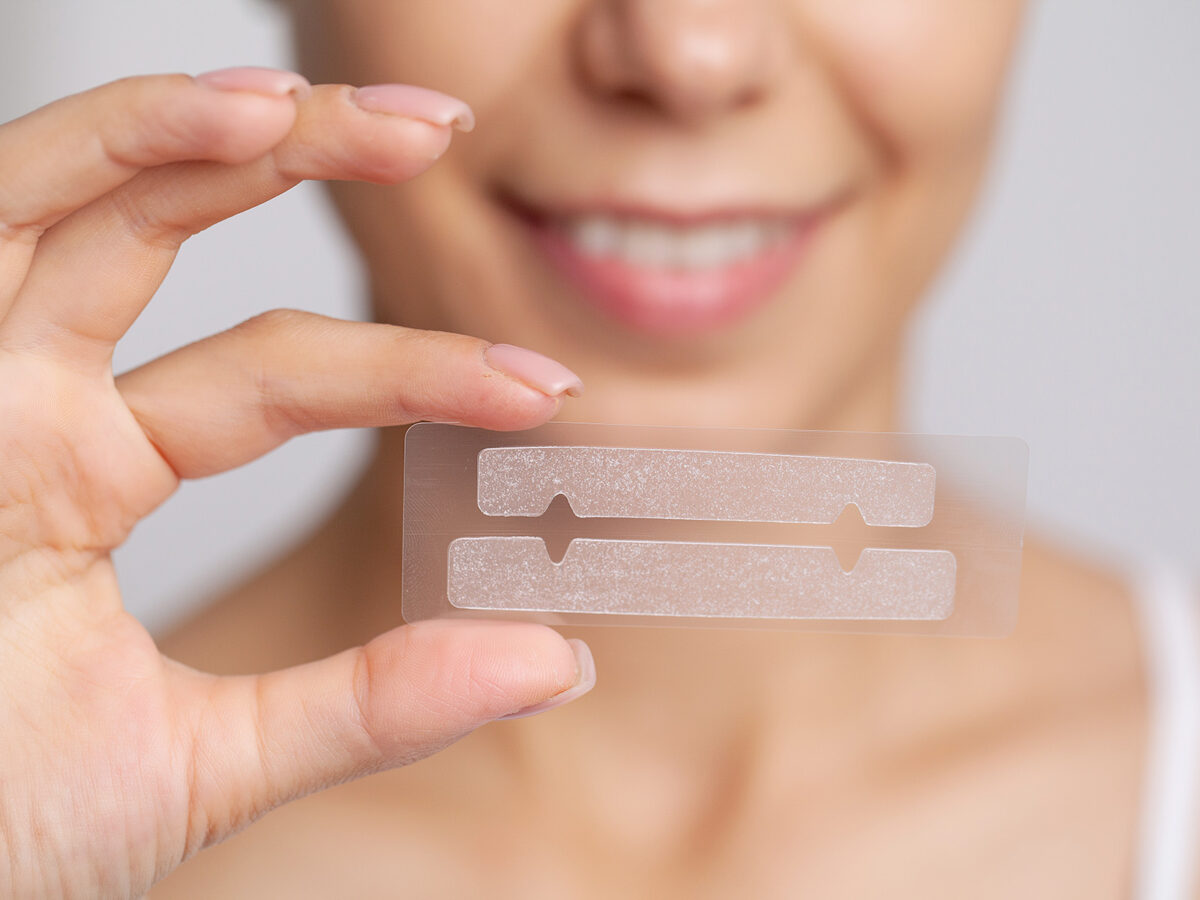Blog
Dental hygiene tips for healthy teeth & gums

Can Whitening Strips Damage Your Teeth?
We all wish to have white teeth which enhance our smile, our overall appearance, and of course, our self-confidence. But like most parts of our body, our teeth also go through wear, tear, and damage as we age and can turn yellow.
One of the popular ways of achieving that dazzling smile is through whitening strips. These strips can be bought at any store and are an easy, effective, cheap alternative to brighten your pearly whites. These patches can be applied directly to your dentition at home, and for desired results, you might have to repeat this process several times.
But before you buy this whitening product, you must be aware of whether the product actually works, what the strip contains, and whether it can cause more harm than good. To answer all your questions about the teeth whitening strips, we have jotted down all the information you need to decide if you wish to use this product and how to select it.
What Are Whitening Strips?
The brightening patches comprise a thin plastic film with a whitening gel.
- The gel often has hydrogen peroxide in it, having a concentration between five to fifteen percent. Hydrogen peroxide is the active ingredient that whitens the tooth’s enamel.
- Other active or inactive ingredients of a brightening strip are:
- Sodium hydroxide – It is a stain remover.
- PVP (Polyvinylpyrrolidone) – It acts as a shield for enamel against new stains.
- Hydroxypropylcellulose & glycerine – Aids in holding the patch in place on your tooth.
- You need to wear them for thirty minutes a day (the time could vary based on the brand you choose.)
- The treatment time with this product is usually very short (maximum of two weeks.)
- It can effectively remove extrinsic stains from your tooth’s enamel. Extrinsic here denotes stains present on your tooth’s surface.
- These strips can not remove stains that are intrinsic, i.e. stains present underneath the enamel (in the dentin) or deeper.
How Does Dentition Brightening Patches Work?
These patches are thin with a rectangular shape and have whitening gel on one side with some adhesive ingredients. The other side is smooth.
- The strips have a plastic backing, just like other stickers.
- Patches for top teeth and bottom teeth are usually different. The top strips are generally longer.
- You need to peel the backing off from the patch and place them on your pearl whites and press them gently. Some manufacturers might instruct you to avoid brushing your teeth before you apply the strips. You should read the instruction manual that comes along with the product to know exactly how to use them.
- The white patches can be worn anywhere between ten minutes to an hour, based on the brand you get. You need to follow the product instructions to know the amount of time the patches need to be on your teeth.
- After the stipulated wearing time is over, you take the strips out and discard them. You should rinse your mouth as many strips leave a gooey gel behind your pearly whites.
- The product manufacturer’s instructions would tell you how frequently you should apply the patches, but the most common frequency of white strips is every day for two weeks.
Do The Brightening Strips Damage Our Teeth?
In general brightening strips are safe to use for most people. Its safety depends on how properly you follow the instructions while using the patches.
- If the strips are left on your teeth for too long or you use them too often, you can develop dentition issues.
- Our teeth have three layers; enamel, dentin, and the connecting tissues. The dentin layer contains high protein levels that include several collagen proteins. Dentin is a critical component of our pearly whites that strengthens and supports our enamel. Hydrogen peroxide in the whitening patches shrinks the protein and weakens the dentin layer.
- You must also look for another ingredient in the product which is chlorine dioxide. This agent not just removes stains but also enamel which can be dangerous and have side effects.
- One of the common side effects of using teeth whitening patches is increased teeth sensitivity due to its effect on the enamel.
- One of the salient features of the teeth whitening process is the bleaching action of the patches. This bleaching action has the potential to damage your soft gum tissue, so it is vital that you place the patches on the teeth, avoiding the gum area. To be precise with the placement, consider cutting the patches to match your smile.
Do Over The Counter Whitening Products Work?
ADA (American Dental Association) states that teeth whitening patches are capable of effectively removing both intrinsic and extrinsic stains from your dentition. But OTC products generally have a low concentration of brightening ingredients such as hydrogen peroxide; hence, they might be unable to remove adamant or intrinsic stains. The strips do not work on fake pearly whites like crowns, veneers, fillings, bridges, etc.
Rules of Thumb For Using Brightening Patches
When you are using OTC products at home to whiten your teeth, there are certain rules of thumb you must follow:
- Unless the instruction says do not brush your teeth immediately after taking off the whitening patches.
- Use the patches as frequently as mentioned in the package instructions; never overuse them.
- Do not leave the patches longer than what is written in the instructions, as it will not make your pearly whites brighter but only damage them.
- Do not use patches that have chlorine dioxide in them.
- Do not use patches having more than fourteen percent hydrogen peroxide in them.
You can easily and effectively brighten your teeth with whitening strips you get over the counter. But you must follow their instruction manual and also be aware that these patches can only remove extrinsic stains. Not following the packaging instructions can result in damage to your tooth enamel and cause sensitivity.


